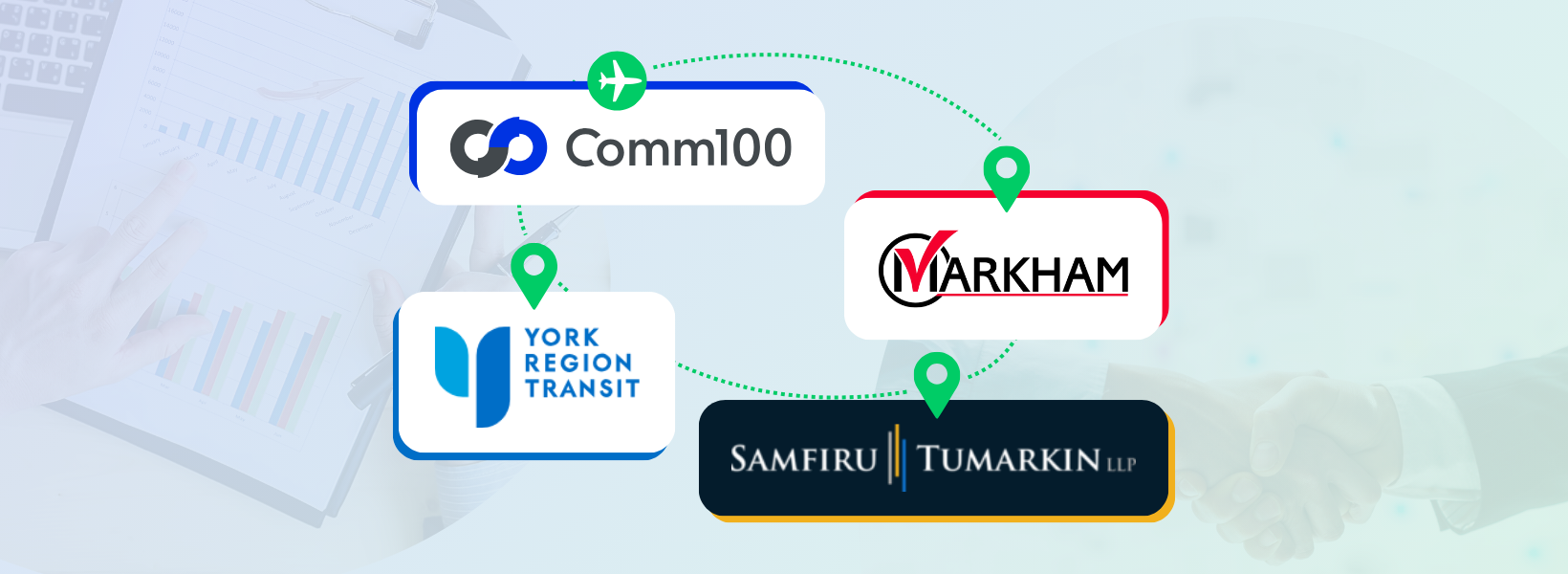When you sign up on Netflix, the streaming platform first asks about your preferences regarding languages and genres you’d like to consume. Netflix then uses this information to personalize its content recommendations and meet your preferences—leveraging the power of personalization to engage with its users.
What started with Netflix’s sophisticated Machine Learning recommendation algorithms has now become the buzz in customer service and support. Personalizing customer service is key for brands to interact with their target audience and set themselves apart from the crowd, especially when 90% of customers are more likely to do business with brands that offer personalized experiences.
So, if you’re eager to learn how to personalize customer service, this article will help you create your own personalization strategies that will directly drive business growth.
Why does personalized customer service matter?
Personalization is the answer – whether you want to improve customer service for customer acquisition or retain existing customers with customized engagement. Let’s take at some of these benefits in detail.
– It earns you loyal customers and boosts retention
44% of customers are more likely to become repeat customers if they receive a personalized experience. If done well, it can position your brand better after a customer’s initial purchase – turning them into loyal clients who return for repeat orders. By showing your buyers how well you know them, you can always create a special place for your brand.
That’s precisely what Spotify strives to achieve through its annual Spotify Wrapped feature customized to every user worldwide.
– It increases conversion and sales numbers
Creating excellent customer service through personalized recommendations, support, and the overall shopping experience can significantly boost your sales rate and repeat orders.
You can also offer relevant recommendations to increase your chances of upselling your customers like Pura Vida does here with their “You may also like” section.
– It offers a competitive advantage in a crowded market
Personalization gives you an edge over your competitors, building your image as a customer-centric brand.
On top of this, it can also improve customer satisfaction, bring positive reviews, and ultimately promote word-of-mouth marketing to enhance your brand’s credibility. Positive word-of-mouth marketing helps establish the legitimacy of your brand because people are relying on community wisdom instead of a single person’s reviews.
– It improves the overall customer experience
Contrary to common belief, personalizing experiences is not limited to customized recommendations. Many brands adopt a more subtle form of personalization, which permeates the customer’s complete experience with the brand.
Glossier’s customer service department responds to buyer messages and comments on social media. They go the extra mile to create individualized experiences for each engagement. For example, after a customer buys a product, one of Glossier’s representatives reaches out to them via automated email responder. This is a great way to uncover product issues before your customers get seriously frustrated.
How to personalize customer service
Now that you know why personalizations matters and how it can make your brand stand apart from the competition, let’s look at the seven best strategies that can translate those benefits into measurable results for your brand and how to personalize customer service in your organization.
1. Track and leverage customer data
Knowing your customers is the best place to start creating a personalized customer service framework. So, research and source the best data-driven tools to secure actionable insights about your target audience.
Capture insights about your customers’ demographics, product knowledge, preferences, and buying capacity. These insights will inform you about your target buyer’s preferences and help customize their shopping experience.
How to personalize customer service with customer data?
Customer data comes through various channels—email, website, social media, and sales calls. Collate data from all these sources to perform deeper analyses and extract insights that move the needle for the business.
A high-functioning CRM will help in collecting granular data from customers. You can then transform this dataset into dynamic dashboards that give you the pulse of your target audience. Once you’re ready with these dashboards, here are some strategies to personalize your customer service:
- Let self-service options like the knowledge base or FAQs be your customer’s first step. It will reduce the friction resulting from waiting time at call centers and minimize the influx of tickets to your support team
- Let customers enter the category of their issue in a form as they place the request to communicate with a customer service executive. Use this data to route the call to a service rep capable of providing a satisfactory resolution
- Make sure your team members can access all the necessary, neatly-organized customer data reliably at all times
- Let the customer feedback guide your support team about the call quality. When the next service rep sees this rating, they will know what kind of service the customer has had so far.
Simply collecting and tracking customer data is not enough. Build an equipped team to use this data for resolving customer queries and offering personalized support.
2. Use chatbots
A chatbot is an effective avenue for brands to offer real-time customer support at any hour of the day. An AI-powered chatbot can also handle more complex actions, such as helping a user navigate the website or better interpreting the customers’ grievances.
Here are some other benefits of using chatbots and live chat for personalized customer service:
- AI-based chatbots can help save up to 30% for growing companies that would otherwise spend money hiring and training employees to personalize their support
- Chatbots help international customers outside of your time zone. When a customer needs more help, the chatbot can program a ticket for the service rep to address
- By activating AI chatbots on sensitive landing pages, you can offer timely discounts and help visitors quickly resolve their queries, thereby reducing their friction with the brand
- Chatbots collect qualified leads with their predefined set of questions. Your service reps will have all the data they need to understand the customer’s query before contacting them
- AI chatbots are more responsive to users’ data. So, your brand can respond to each customer individually. They help implement personalization at scale.
With all its flexibility and advanced capacity, an interactive chatbot provides great promise to create personalized customer experiences.
3. Go omnichannel with your customer support
Personalization is all about treating each customer individually, but omnichannel customer support takes this concept to the next level.
An average buyer has access to multiple brand touchpoints in their journey—social media, email, live chat. An omnichannel customer support team enjoys a single platform for every customer query from any channel. This means that when a customer reaches out via email, but then switches to live chat, the agent responding to their query has all the information and conversation history at hand. This empowers agents to provide consistent and helpful support, while allowing customers to move from one channel to the next seamlessly.
A hyper-connected world demands an omnichannel customer service strategy to personalize their buying experience. Here’s how you can hit your personalization goals with this approach:
- Centralization and data integration keep you on top of every customer’s experience, creating opportunities to enhance their experience through a personalized message
- Offering personalized experiences on different channels—like social media and emails —can ease your customers’ journey to resolving their queries and promotes more one-on-one communication
- A unified personalization strategy assures your buyers of quick and hassle-free support, encouraging them to buy more products more often
- Brands like Sephora are leveraging omnichannel customer service with the combination of their online store and in-store tablets with personalized “Beauty Bags” to simplify a shopper’s selection of products and shopping experience.
Strong awareness of your customer journey, possible customer touchpoints, and automation tools can build a robust omnichannel service strategy to maximize personalized communication.
4. Create self-service portals
A self-service portal equips your customers with the resources to resolve their queries without seeking help from your agents. An efficiently designed and helpful self-service portal includes:
- Answers to frequently asked questions
- A knowledge base with how-to articles to solve the most common problems
- Knowledge-sharing webinars and explainer videos to offer the users a deep dive into specific topics
- A support community so users can help each other, like the Microsoft Community Answers page.
Take a look at Airbnb’s self-service portal to inspire your own. This exhaustive portal comprises articles to guide you for some common concerns. You can also seek support depending on four categories.
Here’s a peek into everything you can achieve through a self-service portal:
- Give quick access to vital information most customers need
- Minimize the number of queries for your support team
- Make the customer feel special with some clever prompts and menu names
- Link your support portal to one of your company’s social media handles.
Making this portal customer-centric is crucial to building a helpful resource base for your users. Add simplified navigation options and incorporate elements of personalization to make them feel heard.
5. Ask for and implement customer feedback
Customer feedback is this first-hand information crucial to your personalization initiatives. A key reason why many companies fail at personalization is that they don’t pay heed to customer feedback.
A feedback loop will bring crucial insights into your customers’ view of your brand. It will also help identify the opportunities to enhance individual experiences through personalized communication.
Sending personalized, automated emails to ask clients for feedback is a great way to improve customer service. Here are some quick tips to help you plan your customer feedback strategy:
- Avoid using the term “survey” when taking feedback. Instead, use the word “questionnaire” to appear more approachable
- Keep your forms limited to questions that target one issue. Provide fewer options with a meaning attached to each option
- Show numeric progress bars for long questionnaire forms
- Try embedding all questionnaire forms within emails themselves, so customers don’t have to leave their email app to fill them
- Look at scoring your questionnaires so you can assign appropriate values to each answer
- Keep a change log of all issues reported and new features suggested by customers transparent to those customers. ClickUp’s change log portal is a great example.
6. Keep track of and reward loyal customers
Loyalty programs create a solid base for personalized experiences by helping you collect more data with every new order. You can use this data to understand customers’ shopping patterns and offer customized rewards to incentivize more orders.
In rewarding customers for their repeat purchases, rewards are an excellent means to inspire loyalty. So, let’s look at how you can create a loyalty program and personalize it to your buyers’ preferences:
- Customers will buy from you repeatedly until they gather enough loyalty points for rewards. This long-term association automatically develops a personal connection with each customer, making the brand worthy of their time and money
- Rewards and milestones make people feel special. Name your loyalty program creatively to amplify this feeling, as Jimmy Joy does
- Rewards can work better than discounts because, for customers, they often act as returns against higher product prices
- It creates brand advocates who don’t just spend money but also inspire their friends and family to spend money on your products. Better word-of-mouth (WOM) essentially keeps this customer personalization engine powered on and sustainable.
You’d be surprised to know that the average customer is a part of 15 loyalty programs. Your loyalty program needs to build, nurture, and preserve an emotional connection with the customer to stand out from these brands.
Conclusion
Personalization is nothing new. But personalizing this service across channels and through cross-functional collaboration is new – and it’s a highly effective strategy for customer acquisition and retention.
When customers feel special, they will reward that brand with repeat purchases and share positive customer service reviews with their friends and family to grow your customer base.






